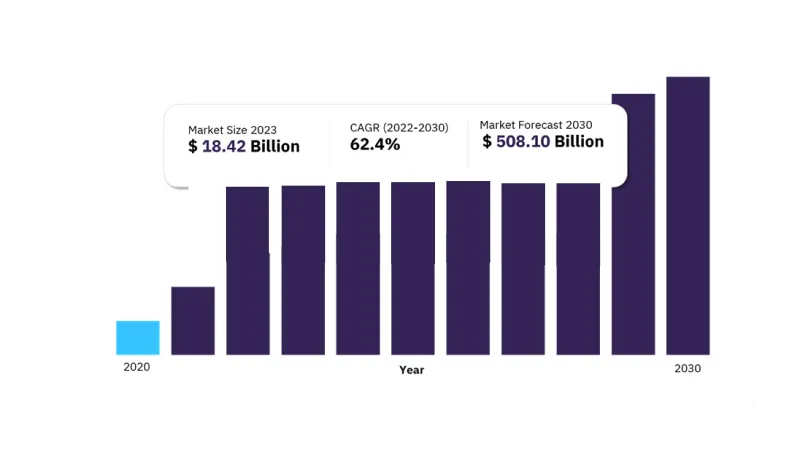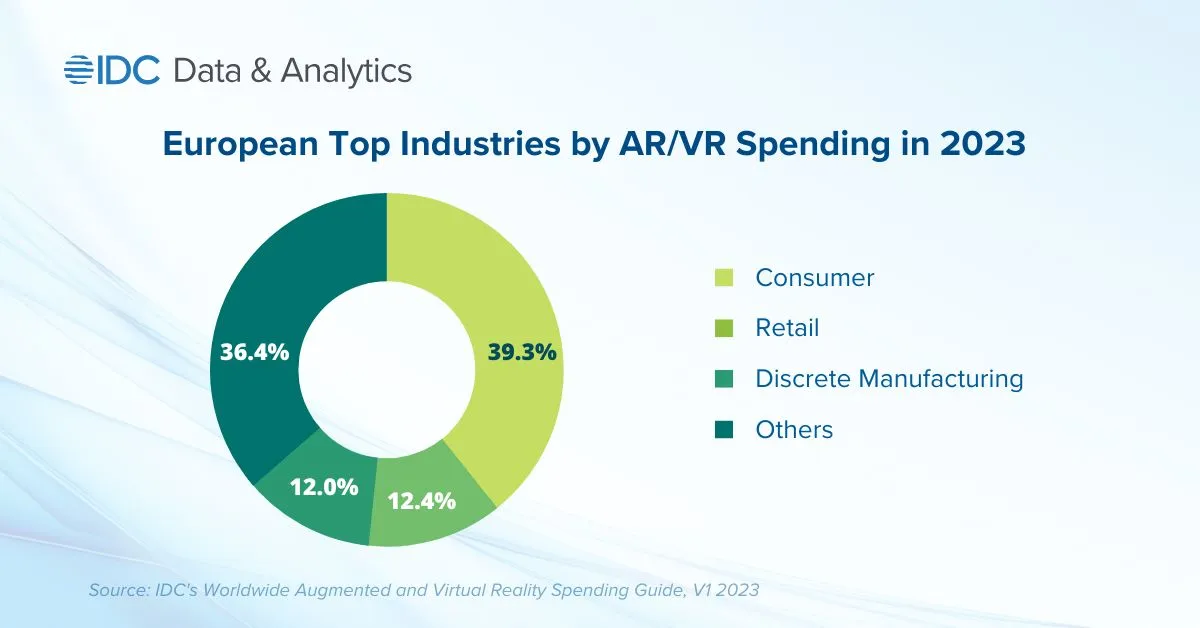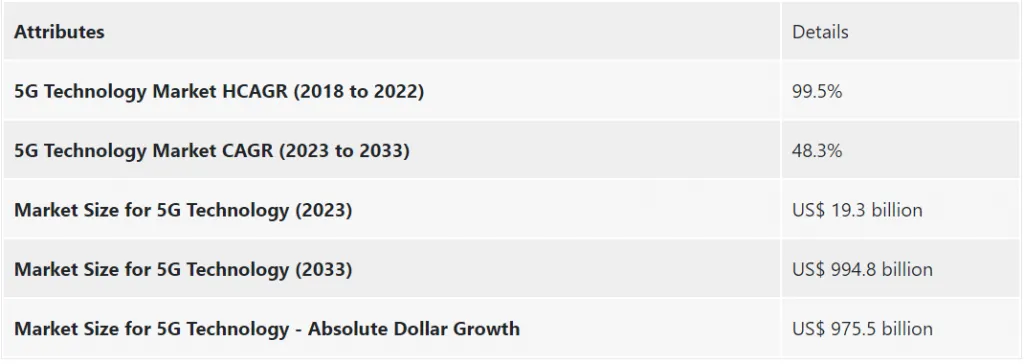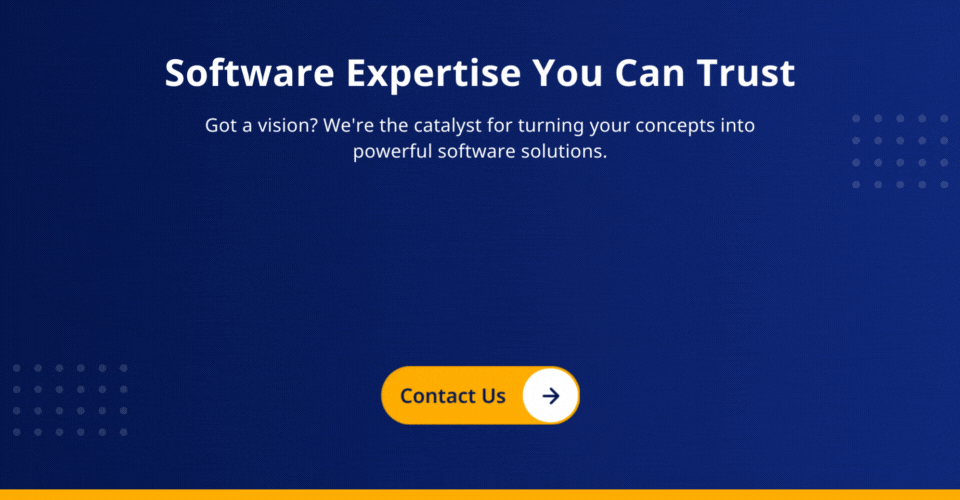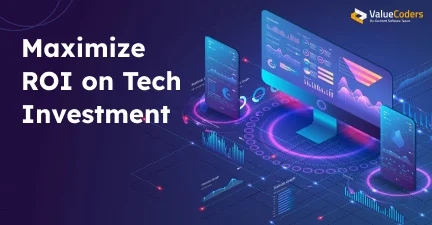Staying updated with the upcoming technological advancements is crucial for businesses in 2025. This blog discusses six emerging tech trends – artificial intelligence, internet of things, blockchain, extended reality, 5G technology, and edge computing – having the potential to transform operations, enhance customer experiences, drive innovation, and maintain a competitive edge. Businesses must embrace these technologies now to future-proof growth and success.
“By 2030, the total economic value added by AI is projected to reach $15.7 trillion globally,” according to PwC analysis.
Keeping up with future business technology trends is crucial for companies to stay competitive and drive innovation in 2025 and beyond.
This blog post discusses the six most significant technological advancements organizations must embrace over the next year to future-proof operations and growth.
From leveraging emerging capabilities like Artificial Intelligence and the Internet of Things to deploying secure blockchain-based solutions, extended reality, and edge computing – businesses have an exciting yet challenging landscape ahead.
Adopting these technologies to enhance processes and customer experiences while optimizing costs would be a question.
As a business leader, staying informed about emerging technologies can help guide your tech investment strategy. We break down the innovations you should focus on and provide recommendations on where to get started.
Let ValueCoders assist in refining your approach for maximum impact.
Read on to determine how to position your company best to harness the technologies of tomorrow and today!
Let’s discuss six major business technology trends organizations should prepare for now.
Trend #1 Artificial Intelligence (AI) and Machine Learning (ML)
The first technology trend for businesses is AI and ML. It has evolved from niche technologies to essential business tools that can analyze data, identify patterns, predict outcomes, recommend actions, and drive process automation in real-time. Adoption is vital for unlocking efficiency and competitiveness.
Why it matters?
AI and ML have evolved from buzzwords to mainstream business tools. From predictive analytics to personalized recommendations and marketing, Artificial Intelligence is revolutionizing workflows.
As per MarketsandMarkets, the global AI market size is expected to grow from $5.00 billion in 2017 to $40.09 billion by 2025.
When integrated smartly, AI and ML can drive significant efficiency improvements, innovation opportunities, and cost reductions across functions. Businesses that fail to adopt AI risk falling behind competitively.
What you need to do:
Every business can benefit from AI and ML capabilities. The first step is evaluating existing workflows and identifying areas that can be automated or enhanced using these technologies.
Prioritize integration based on impact and effort required. While essential AI solutions are easily accessible, most companies lack the talent and resources to develop advanced AI independently.
Seeking help from Artificial Intelligence (AI) service providers for activities like building customized chatbots or implementing generative AI integration services allows faster deployment and frees up internal teams.
Approaching AI ethically and planning for evolving regulations around data privacy is also crucial when charting adoption roadmaps. The opportunities are manifold for those moving quickly but deliberately.
Trend #2 Internet of Things (IoT)
The next critical future technology trend companies must embrace for success in 2025 is the Internet of Things (IoT). The IoT is an ecosystem of interconnected sensors, devices, and objects that can collect, exchange, and act upon data without human intervention.
IoT quickly transforms business operations across manufacturing, supply chain, retail, and more by optimizing costs and boosting customer experiences.
Why it matters?
IoT is fast transforming businesses across domains by enabling real-time insights and automation. From manufacturing shop floors to retail stores, connected sensors and devices drive efficiency.
As per Fortune Business Insights, the global IoT market is expected to grow, with a CAGR of 26.1%, from 544.38 billion in 2022 to USD 3,352.97 billion by 2030, highlighting the incredible growth potential. Companies that leverage IoT trends can optimize costs, boost customer satisfaction, and build a competitive edge.
What you need to do:
To leverage IoT, businesses must first identify critical objectives they want to achieve — whether enhanced customer experiences via location-based solutions, reduced machine downtimes through predictive maintenance, improved product quality, or faster order fulfillment.
The next step is deciding which devices and sensors can collect valuable data to help achieve said objectives. Working with IoT application development services providers to map out data flows and address any tech capability gaps is highly recommended during planning and execution.
As IoT expands in reach, paying attention to potential security risks and mitigation safeguards will also be necessary. Businesses can hire IoT app developers skilled in designing robust IoT adoption strategies and trusted technology partners to derive immense value.
Find out how IoT can optimize your operations and drive innovation with ValueCoders.
Trend #3 Blockchain Technology
The third significant technology innovation that will impact businesses in 2025 is blockchain. A decentralized, distributed digital ledger records transactions and data exchanges on an open, trusted network using cryptography and protocols. It facilitates disintermediation, enhances security, speeds settlements, and reduces costs.
Why it matters?
Using cryptography and consensus mechanisms ensures trust and integrity. GlobalData estimates that the global blockchain market size is expected to grow from US$18.42 billion in 2023 to US$508.1 billion in 2030, at a CAGR of 62.4%, highlighting the immense potential.
Blockchain enables disintermediation, enhances security, facilitates faster settlements, and reduces costs. These benefits can transform finance, supply chain, identity management workflows, and more.
What you need to do:
To leverage blockchain, organizations must identify processes that involve multiple intermediaries and have the potential for disputes. Good candidates for blockchain solutions are transactions that need immutable audit trails like invoices, purchase orders, etc.
Evaluating whether the technology can help solve business challenges is the starting point. Seeking help from blockchain specialists is highly advised, given that in-house capability around the technology may be limited currently.
Reliable enterprise software development trends indicate increased investments in blockchain developers as adoption grows. Partnering with companies following software development outsourcing trends can accelerate capability building, too.
Staying updated on the evolving regulatory landscape and assessing environmental impact are crucial as blockchain scales from proof-of-concepts to production environments.
Trend #4 Extended Reality (XR)
Extended Reality (XR) is the next big business technology trend companies must prepare for Extended Reality technologies like Virtual, Augmented, and Mixed Reality are creating immersive digital environments that integrate with the real world to transform human-machine interaction. XR unlocks new possibilities for customer engagement, employee training, product design, etc.
Why it matters?
Extended reality refers to immersive digital environments powered by hardware and software that enhance real-world settings. XR drives the next wave of human-machine interaction by enabling simulation-based experiences, remote collaboration, and hyper-personalization.
According to IDC, global spending on AR/VR technologies is forecasted to reach $10.5 Billion by 2027, growing at a 24.9% CAGR for 2022–2027.
As XR capabilities advance, companies can leverage their potential to engage customers, train employees, design products, and transform workflows as part of broader digital transformation trends. Being an early adopter is vital to staying competitive.
What you need to do:
Companies keen to pursue XR initiatives must start by identifying essential user journeys or processes that can be enhanced using immersive technologies. Seeking help from digital consulting services providers to formulate pilot use cases and plan scalable deployment while building in-house capabilities is highly recommended.
Developing XR solutions requires cross-disciplinary expertise in design, 3D modeling, application development, and content creation. Partnerships with specialist vendors can help execute ambitious XR roadmaps faster and derive more value from digital transformation strategies. The future is closer than it appears.
ValueCoders can help integrate 5G-ready applications to enable next-gen innovations like IoT and AI.
Trend #5 5G Technology
The advent of 5G networks represents another significant business technology trend shaping business innovation. 5G refers to fifth-generation wireless networks that provide significantly faster speeds, lower latencies, and increased bandwidth than 4G LTE.
The FMI predicted that the global 5G technology market revenue valued at US$ 19.3 billion in 2023 will record a CAGR of 48.3%, reaching US$ 994.8 billion by 2033.
As 5G coverage grows globally, it will be an essential platform for emerging innovations around autonomous vehicles, AR/VR, IoT, AI, big data analytics trends, and more. Harnessing 5G’s potential requires strategic road mapping, infrastructure upgrades, capability development, and technology partnerships.
Why it matters?
5G denotes the fifth generation of wireless networking technologies providing enhanced mobile broadband speeds, reduced latencies, and increased connection density compared to 4G LTE. 5G enables data speeds up to 100 times faster than current networks.
As 5G coverage expands globally, it will be a critical foundation for emerging capabilities like self-driving vehicles, high-definition virtual meetings powered by AR/VR, real-time video analytics using AI/ML, and complex IoT ecosystems.
Unlocking faster insights from big data, supporting technologies like edge computing, and driving innovations across domains is why 5G lies at the heart of industry 4.0 trends. Leading the charge on deployment and application development is vital for businesses.
What you need to do:
To prepare for 5G, companies must chart out use cases linked to advanced connectivity, data, and process requirements. Upgrading network infrastructure, devices, and cybersecurity, partnering with telecommunication providers, and hiring expert Artificial Intelligence developers to build next-generation applications are crucial, too.
Seeking help from IT services providers experienced in wireless technologies like 5G and building Proofs-of-concept around generative AI integration services can aid road mapping and capability development.
With the right planning, platform, and partners, businesses can harness 5G’s potential to transform customer value propositions, offerings, and operations for sustainable advantage.
Trend #6 Edge Computing
The final top trend in software development companies must embrace is edge computing. This refers to decentralized data processing and computing power located at the edge of networks, closer to devices and systems generating real-time data. It enables faster insights and action while supporting technologies like IoT, autonomous vehicles, AR/VR, and more.
Why it matters:
Instead of routing all data to the cloud or remote data centers, edge computing occurs via micro data centers at the network’s periphery. Edge computing enables real-time data insights, reduced latencies, enhanced security, and operational resilience for emerging technologies like IoT, autonomous vehicles, AR/VR, and more.
As per Technavio, the global edge computing market size is projected to grow by USD 9928.42 million from 2022 to 2027, with a CAGR of over 24.74%.
As part of broader digital transformation trends, companies across industries implement edge computing to support time-sensitive processes, next-gen customer experiences, and advanced capabilities like computer vision. Leading the charge can reveal new opportunities.
What you need to do:
To explore edge computing, businesses must identify use cases where real-time data application is necessary or cloud latency is suboptimal. Working with digital transformation services consultants to map out data flows and plan localized processing that integrates with existing infrastructure is vital.
Most organizations lack complete in-house capability for rolling out and managing edge computing solutions. Strategic IT partnerships for implementation, maintenance, and enhancing skills are crucial. With the right roadmap anchored in business objectives and reliable technology allies, deriving value from edge computing at scale is achievable.
Unlock real-time processing and smarter data handling with ValueCoders.
In Closing
The rate of technological innovation continues, showing no signs of slowing down. As discussed in this blog, AI, IoT, blockchain, XR, edge computing, and 5G are the top business tech trends set to disrupt industries in 2025.
Key Takeaways
- Invest in training and pilot projects around these technologies now.
- Seek experienced partners to accelerate capability building.
- Stay updated on emerging applications, use cases, and regulations.
- Focus on ethical adoption and positive environmental impact.
Companies that realign strategies, talent, and operations to harness these trends will unlock immense value and competitive edge. Leverage ValueCoders’ expertise in digital transformation, app development, and cutting-edge technologies to bring your 2025 tech vision to life.




